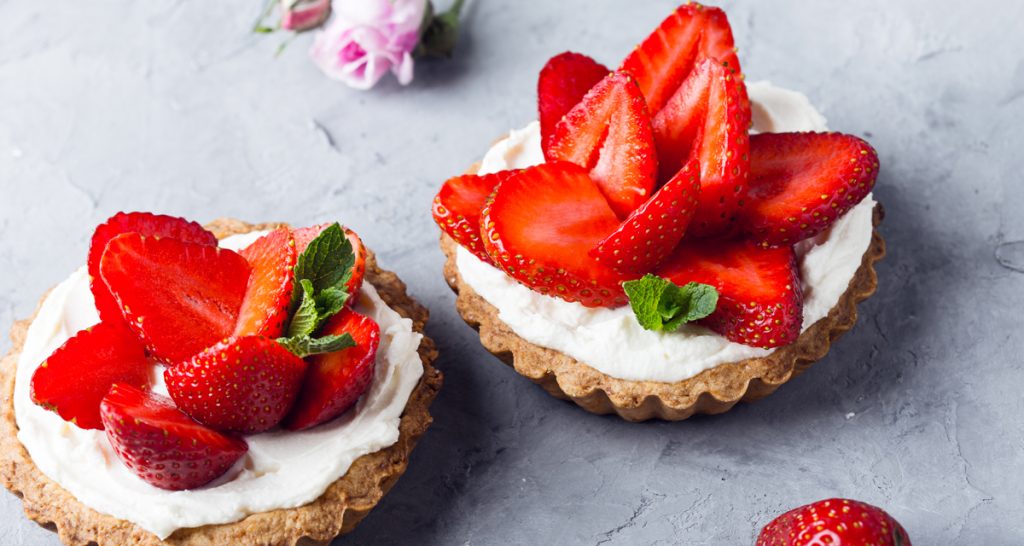
With the end of lockdown in sight and sunnier weather beckoning, many of us are turning our attention to our diets, looking to shed the unwanted pounds brought on by one too many slices of banana bread.
Stress, anxiety and boredom are all familiar triggers many of us have experienced over the past year, leading to unhealthy eating habits.
Our time spent in lockdown has changed a lot about our diets and, with the added pressure of home working, it’s no surprise that we’ve leaned on comfort foods more than normal to give us a boost in the darker days.
But it’s not just weight gain that might be giving us pause for thought when it comes to our diets. If you’ve found yourself feeling under the weather in recent months, it could be the case that your lockdown diet has unlocked a food intolerance.
The tell-tale signs of a food intolerance
Food intolerances are relatively common. It’s thought that around 45% of the UK population suffers with unwanted physical reactions to particular ingredients. The foods that cause problems, and the severity of the reactions, can vary greatly from person to person. For some, reactions are mild and only happen in response to one or two ingredients. For others, reactions can be much more debilitating and can be triggered by a multitude of foods and drinks.
While symptoms vary, there are a range of common complaints that people with food intolerances often report, including itchy skin, acne and eczema, IBS and bloating, headache and migraine, joint pains, and low mood.
All of these complaints can occur when the body mistakes certain food proteins as a threat and releases antibodies to fight them, triggering inflammation.
Unlike allergies, food intolerances are not determined at birth and can develop at any time. So, could the last year of lockdown have triggered a food intolerance? If some of those symptoms seem familiar, let’s take a look at the ways your diet may have changed.
Too many takeaways
If you’ve been hammering your food delivery apps, you’re certainly not alone. The easy convenience, combined with our longing for restaurants, means more of us have been turning to takeaways to add a little novelty into our days.
But, If the balance of your mealtimes has moved away from fresh meals cooked from scratch, to takeout, you might have noticed a shift in more than just your waistline.
These calorie laden dishes are often processed, containing high levels of fats and salts that can upset your gut microbiome, putting you at risk of a condition called leaky gut, and in turn, food intolerances.
Boredom boozing
Have you been turning to a tipple in the evenings during lockdown? Again, this isn’t uncommon. With pubs and restaurants closed, home consumption of alcohol has also increased.
But with those extra drinks comes greater potential imbalance to your gut. The yeasts and sugars in beers, wines and spirits can adjust the balance of bacteria in your gut, causing a range of complaints, from gas to diarrhoea.
Too much alcohol can be another cause of leaky gut, damaging the gut wall and increasing the chances of developing food intolerances.
Lack of variety
Many of us have likened lockdown to Groundhog Day, and our diets have certainly suffered from the sameness.
In the midst of pandemic fatigue, it’s hard to find the energy and enthusiasm to cook exciting, interesting meals every day. Many of us have found ourselves turning to the same small roster of recipes on repeat.
But the lack of variety could be doing more harm than just boredom. The body needs a wide variety of nutrients from a broad palette of ingredients. By limiting our nutrition through a bland and repetitive diet, we can create a build-up of the same ingredients which can lead to an intolerance to those foods.
Taking control of your diet
The stress and anxiety of lockdown will have had a lot to answer for when it comes to our diets over the past year. But if you feel like something you’re eating is making you feel unwell, and you’re left guessing what it could be, it might be time to take a closer look at your diet.
Getting to the bottom of a food intolerance can be frustrating. Elimination diets, where you remove one food at a time for a few weeks to see how you feel, can be a long process. And, as many of us react to between two and six ingredients, it can take a long time to understand the bigger picture.
Additionally, the foods that you react to can often be surprising. It’s common to blame a few ‘usual suspects’ when it comes to food intolerance but in reality anything, from chicken to chickpeas, could be the cause.
At Smartblood, we offer a comprehensive test to help you take control of your diet quickly and discover your own particular trigger foods.
Our home-to-laboratory service, using ELISA plate testing, gives you fast, accurate results that pinpoint exactly which foods you are reacting to. Tests are completed in our accredited laboratory by trained experts, with clear, easy to understand results sent to you via email within three days.
The test is supported by a 30-minute telephone consultation with our BANT registered Nutritional Therapist to help you understand your results and make safe, sustainable changes to your diet.




